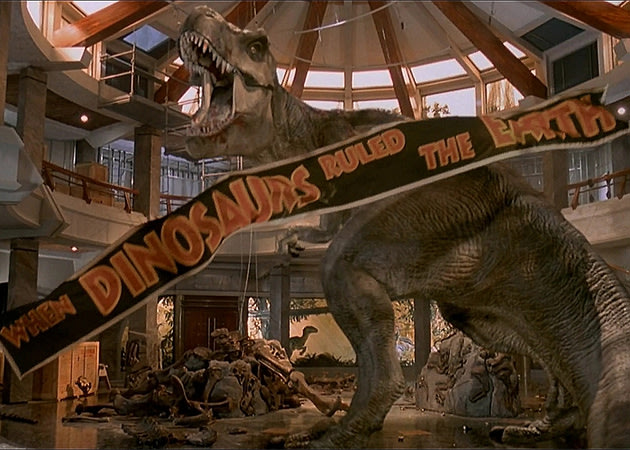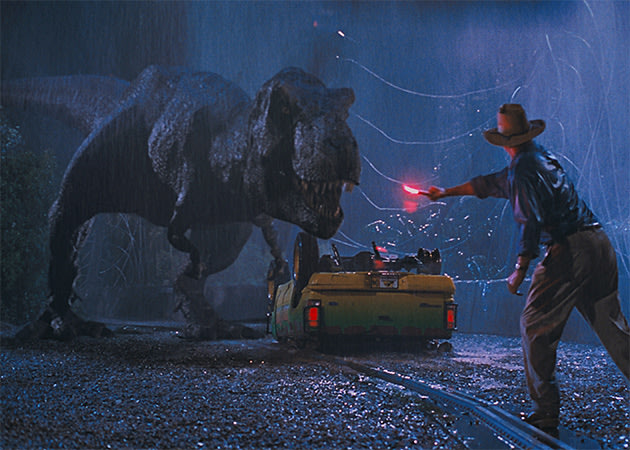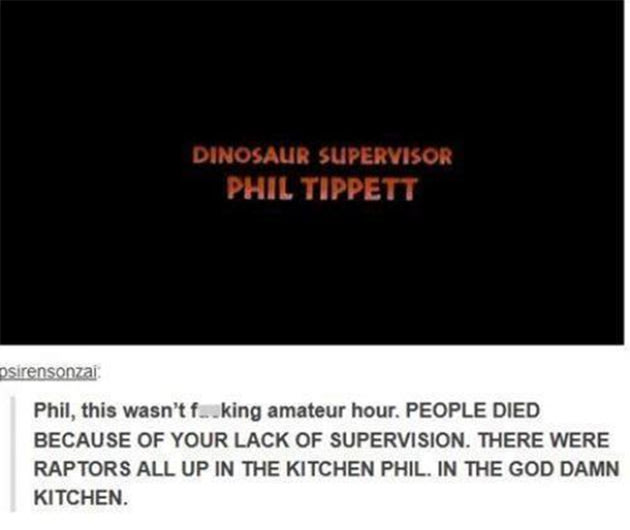 Universal Pictures
Universal Pictures
Despite hitting theatres over two decades ago, the visual effects in 1993's “Jurassic Park” still hold up very well. The velociraptors, the T. Rex, and other dinosaurs are just as believable today as they were more than twenty years ago.
But why is that? How have Steven Spielberg's effects in “Jurassic Park” stood the test of time, while other movies have not aged so well?
When used properly, computer generated visual effects can help transport viewers into the world of the movie. Filmmakers can use VFX to build sets they could never build practically, or to render fantastic creatures and locales. When used poorly, though, CG imagery sticks out like a sore thumb. There’s nothing worse than being engrossed in a movie, only to be taken out of it by a bad or fake-looking piece of VFX.
In the early 1990s, movies were suddenly filled with VFX and barely any of it was up to snuff with the Industrial Light & Magic’s Oscar-winning work on “Jurassic Park.” It’s hard not to cringe looking back on some of those early efforts.
“Jurassic Park” helped ignite a revolution in Hollywood, one that saw movie studios rush to replace things like sets and creatures with computer generated. Spielberg’s film proved that almost anything could be realized with computers, and in many cases it could be achieved for less cost. It was the first step towards almost fully computer-animated films like “Avatar” and “Gravity,” but like any first steps there were a few stumbles.
As it turns out, the real secret to making VFX look realistic is lighting.
 Universal Pictures
Universal Pictures
It’s no coincidence that many of the scenes featuring computer-generated dinosaurs in “Jurassic Park” take place at night and in the rain. The weather and darkness helped mask what the filmmakers didn't want you to see -- that is, still fairly rudimentary computer generated creatures. Putting a dinosaur in the dark or behind an object went a long way towards convincing the audience that it was the real deal.
There's some debate in the VFX community as to how lighting should be used. "District 9" director Neill Blomkamp actually favours a completely opposite approach, playing up the harsh lighting to make the CGI look more realistic.
"We set out to work with digital creatures, lighting and compositing environments that are conducive to something photo real," Blomkamp told the LA Times in 2009. "My stuff tends to be [computer generated] in very harsh light, like sunlight. Harsh shadows. It feels real. Sometimes it’s easier to make stuff look photo real in that environment.”
 Jurassic Park
Jurassic Park
Another secret of “Jurassic Park's” effects? Most of the dinosaurs were actually created using tradition practical effects, like animatronics and costuming. There is about 15 minutes worth of dinosaur footage in “Jurassic Park,” only six of which are computer-generated.
Most of the big shots featuring the Tyrannosaurus used a life-sized animatronic dino built by special creature effects guru Stan Winston (the guy behind the Xenomorph from "Aliens" and the titular "Predator." As well, many of the raptors were actually just men in suits.
 Universal Pictures
Universal Pictures
Amazingly, "Jurassic Park" wasn't originally supposed to even have any computer-generated VFX. Spielberg and company originally planned to use a technique called Go Motion, a stop-motion animation technology developed by "Star Wars" effects guru Phil Tippett which added motion blur to the creature. However, after seeing early VFX tests put together by ILM without permission, Spielberg and company were convinced that CG was the way to go. Tippett stayed on as "Dinosaur Supervisor," overseeing the animation of the beasts.
 via Tumblr
via Tumblr
However filmmakers decide to create their computer-generated creatures, even today it's a huge challenge to make them look believable. Sometimes you're just better off taking a practical approach.
It's absolutely incredible that more than 20 years on, the dinosaurs of "Jurassic Park" still look as good as they do. Will we still say the same thing in another 20 years?
No comments:
Post a Comment